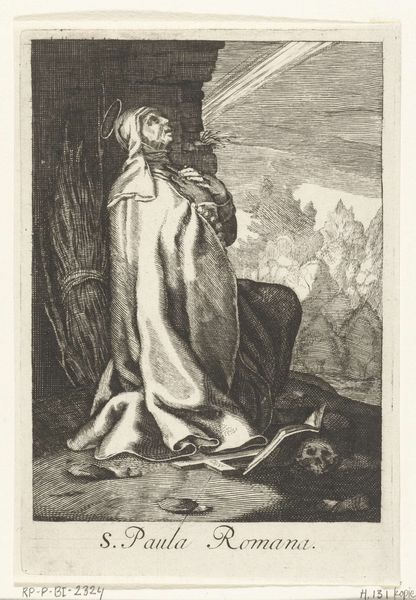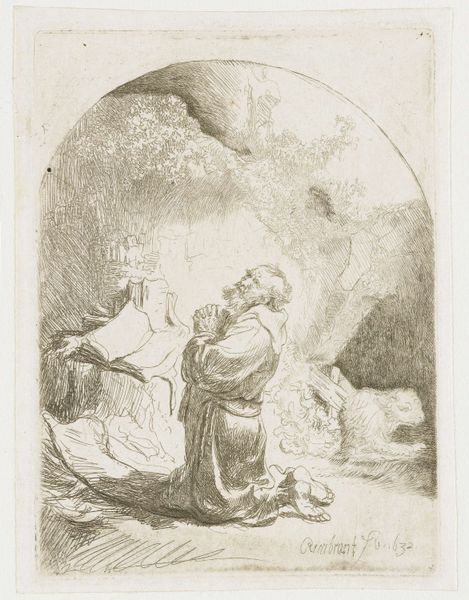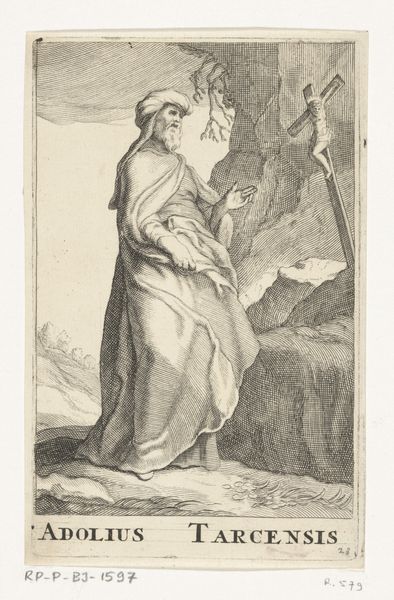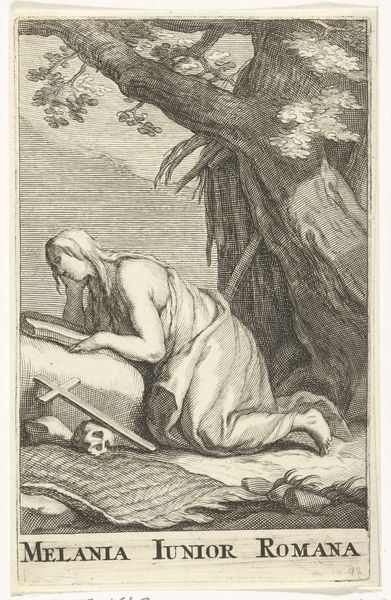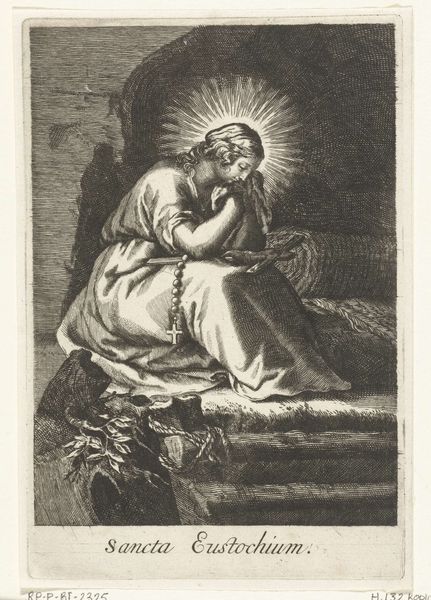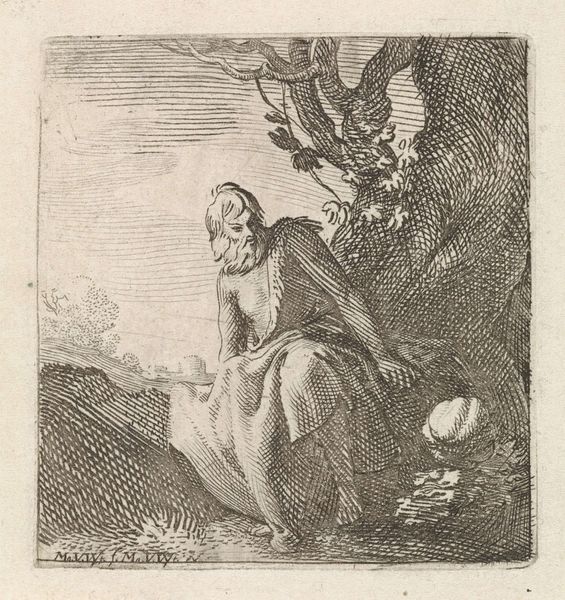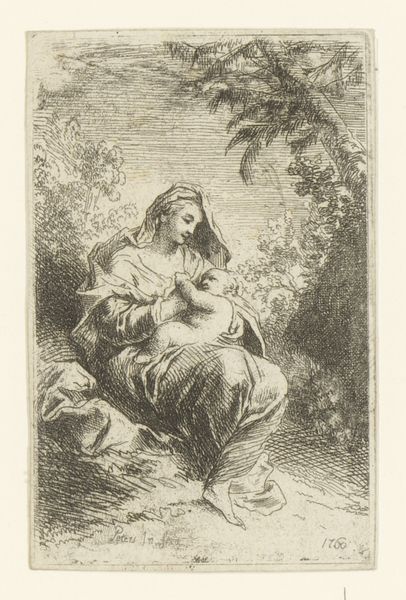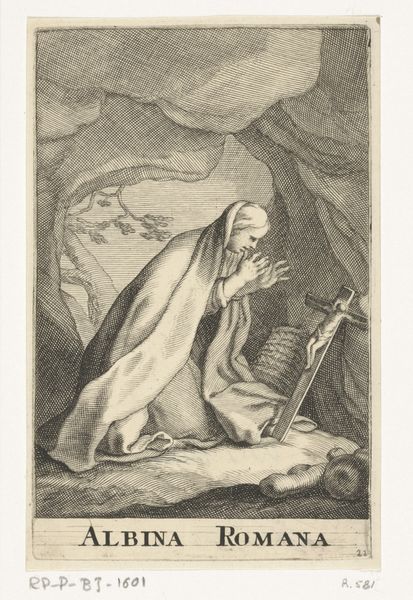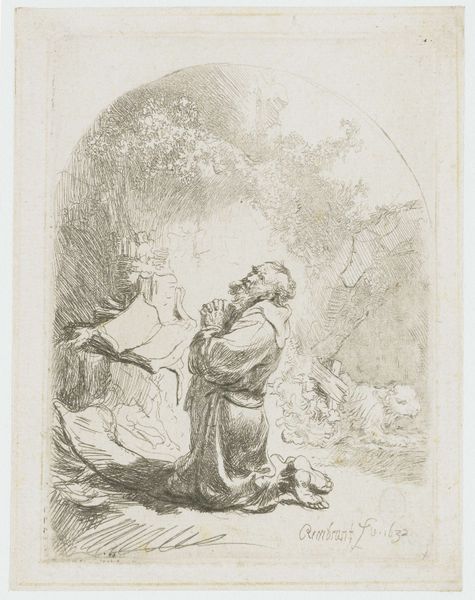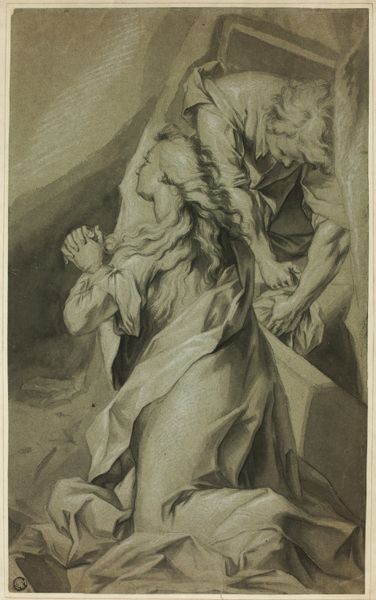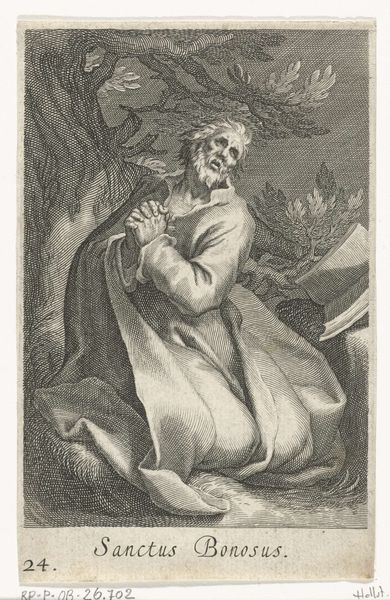
print, engraving
#
narrative-art
#
baroque
# print
#
figuration
#
engraving
Dimensions: height 135 mm, width 85 mm
Copyright: Rijks Museum: Open Domain
Curator: Frederick Bloemaert created this engraving titled “Heilige Apollo van Hermopolis" sometime after 1636. It's currently held in the Rijksmuseum collection. What catches your eye about it? Editor: Immediately? The stark contrast between light and shadow. That beam illuminating the old man…it feels like a spotlight on his wrinkled face. And is that...a little man sitting on his shoulders? Curator: That's a small winged figure often interpreted as Cupid, the god of love. Bloemaert used an engraving technique, a printing process involving cutting lines into a metal plate. Notice how fine and precise the lines are that define the figures and the craggy texture of the cave around him. What kind of labor would be involved? Hours with painstaking attention. Editor: Absolutely. I'm considering how the engraver held his burin to slice into the copperplate and visualizing the prints as commodities moving from the printmaker's shop to be collected and treasured. And is this scene supposed to have religious overtones or…? Curator: Indeed, Apollonius of Hermopolis was an early Christian saint known for his wisdom and devotion. He is usually represented in that grotto setting and with an allegorical winged being that refers to faith, in this case represented by Cupid, the ancient figure. The contrast highlights this intense focus on his inner faith versus external challenges and spiritual trials, don't you think? Editor: I think it creates a mood that wavers between intense spiritual contemplation and perhaps a touch of madness. That cavern doesn't feel particularly comforting, and the light beam, although illuminating, also emphasizes his isolation. Plus there's something to be said about these early modern prints functioning to spread not just religious instruction, but to communicate devotion in the period. Curator: A tension in Baroque aesthetics, indeed, always balancing emotional expression and intricate artistry with faith as an embodied practice, rather than just preached ideals. Editor: Yes, I am realizing that its artistic appeal arises from the engraving itself, emphasizing skill and technique over religious virtue. Bloemaert created the picture as an expertly-fashioned artifact. Curator: Well, seeing Bloemaert's image through your focus on materiality has made me reconsider the labor infused in this print! Editor: And considering its allegorical potential through your personal insight opens more readings of faith than simply religious, I admit.
Comments
No comments
Be the first to comment and join the conversation on the ultimate creative platform.
